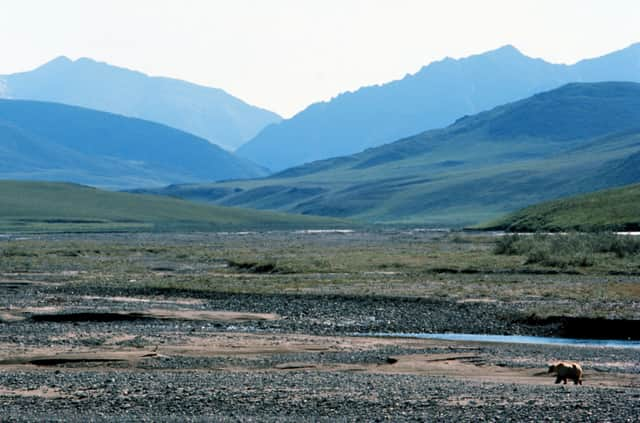Alaskapox virus: symptoms, did case come from a cat, how is it spread, is it fatal - will it come to the UK?


Alaskapox, a recently discovered disease, has claimed its first recorded fatality, as confirmed by Alaskan state health authorities.
The victim, an elderly resident of the isolated Kenai Peninsula, was admitted to hospital in November of last year and died in late January, as reported in a bulletin released by public health officials last week.
Advertisement
Hide AdAdvertisement
Hide AdThe bulletin highlighted that the individual, who was undergoing cancer treatment, had a compromised immune system due to medication, potentially exacerbating the seriousness of the illness.
What is Alaskapox?
Alaskapox, also known as AKPV, is related to other orthopoxviruses like smallpox, cowpox, and mpox. Since an initial case in 2015, Alaska health officials have only recorded six additional instances of the Alaskapox virus.
These cases were exclusively reported among individuals residing in the Fairbanks area, situated over 300 miles from the Kenai Peninsula. Fortunately, all cases were mild, with those infected recovering without the need for hospitalisation.
How is it transmitted?
The transmission method of AKPV remains uncertain, but researchers suggest it may be zoonotic, meaning transmission from animals to humans could be possible.
Advertisement
Hide AdAdvertisement
Hide AdThe bulletin reported that tests have detected signs of current or past infection in various species of small mammals in the Fairbanks region, including red-backed voles and at least one domesticated pet.
The man who died “resided alone in a forested area and reported no recent travel and no close contacts with recent travel, illness, or similar lesions."
He did say that he cared for a stray cat at his home. While the cat tested negative for the virus, it was noted that it frequently hunted small mammals and regularly scratched the patient.
This raises the possibility that the cat might have had the virus on its claws when it scratched the man, with the bulletin highlighting a "notable" scratch in the armpit area, where a red lesion - an early symptom of Alaskapox - was seen
Advertisement
Hide AdAdvertisement
Hide AdHealth officials have said there have been no documented cases of humans transmitting the virus between each other, but recommended individuals with skin lesions potentially caused by Alaskapox cover the affected area with a bandage.
Additional precautions included thorough handwashing, avoiding the sharing of clothing that may have come into contact with lesions, and washing clothing and sheets separately from other household items.
What are the symptoms?
Common symptoms include a rash (singular or multiple skin bumps or pustules), swollen lymph nodes and joint or muscle pain.
The symptoms have manifested as singular or multiple skin bumps or pustules, accompanied by joint or muscle pain and swollen lymph nodes.
Advertisement
Hide AdAdvertisement
Hide AdThe deceased man noticed a red bump in his armpit in September last year, and was given antibiotics. Unfortunately, his condition deteriorated, marked by increased fatigue and intensified pain in the armpit and shoulder.
As the range of motion in his right arm was affected, he was subsequently transferred to a hospital. During his stay, the man reported additional symptoms, including pox-like lesions, according to the case report.
Could it come to the UK?
Alaskan authorities have not provided any comment regarding the potential spread of the virus to additional regions.
It should be noted though that all seven reported cases have exclusively emerged in Alaska, with six of them concentrated among residents of the Fairbanks North Star Borough (FNSB).
Advertisement
Hide AdAdvertisement
Hide AdThe Alaska Division of Public Health has said: "While animal trapping studies have confirmed the presence of the virus in small mammals in FNSB, it is likely that the virus is present more broadly in Alaska's small mammals and that more infections in humans have occurred but were not identified.
"More animal testing is occurring to better understand the distribution of the virus in animal populations throughout Alaska."
Comment Guidelines
National World encourages reader discussion on our stories. User feedback, insights and back-and-forth exchanges add a rich layer of context to reporting. Please review our Community Guidelines before commenting.
